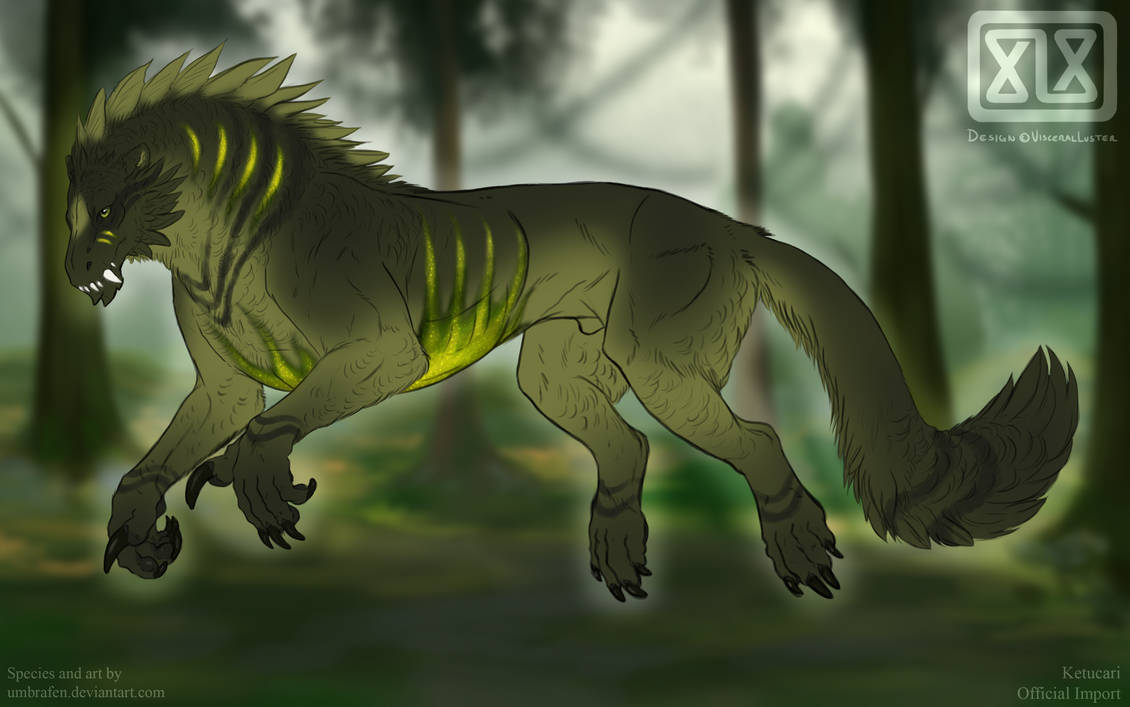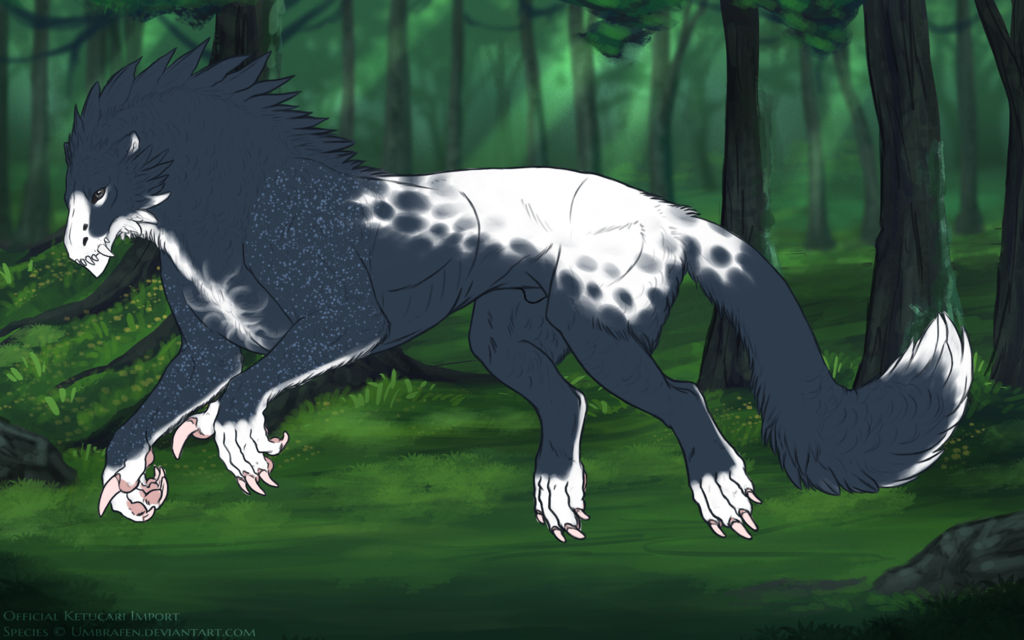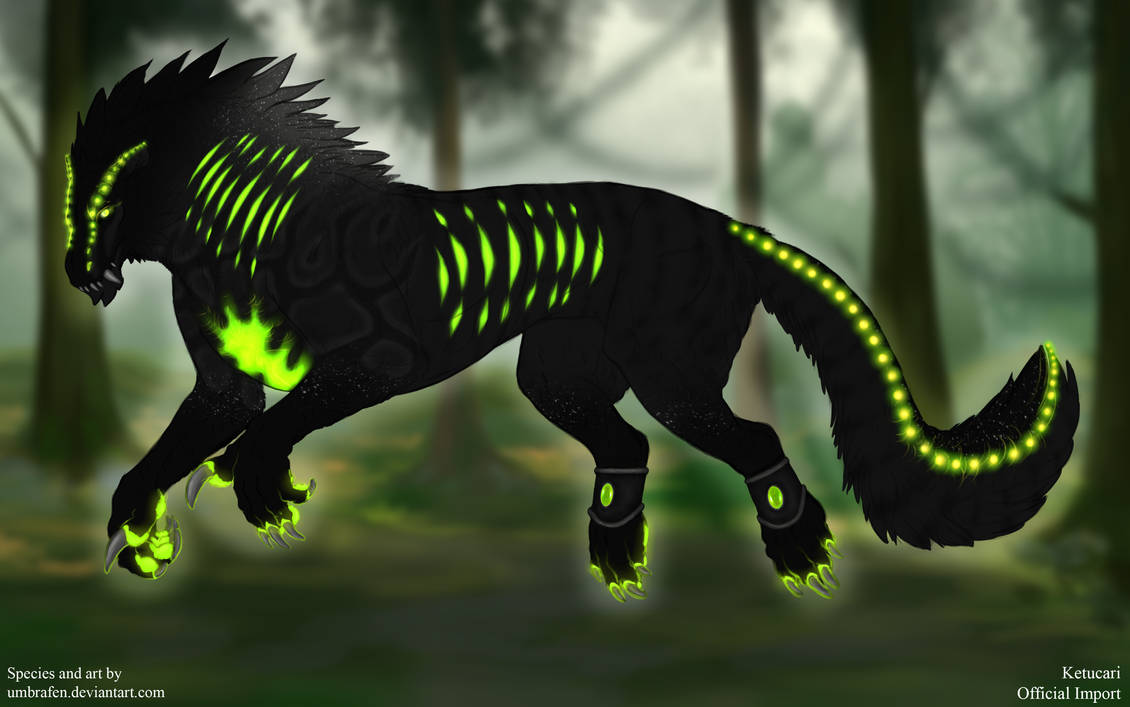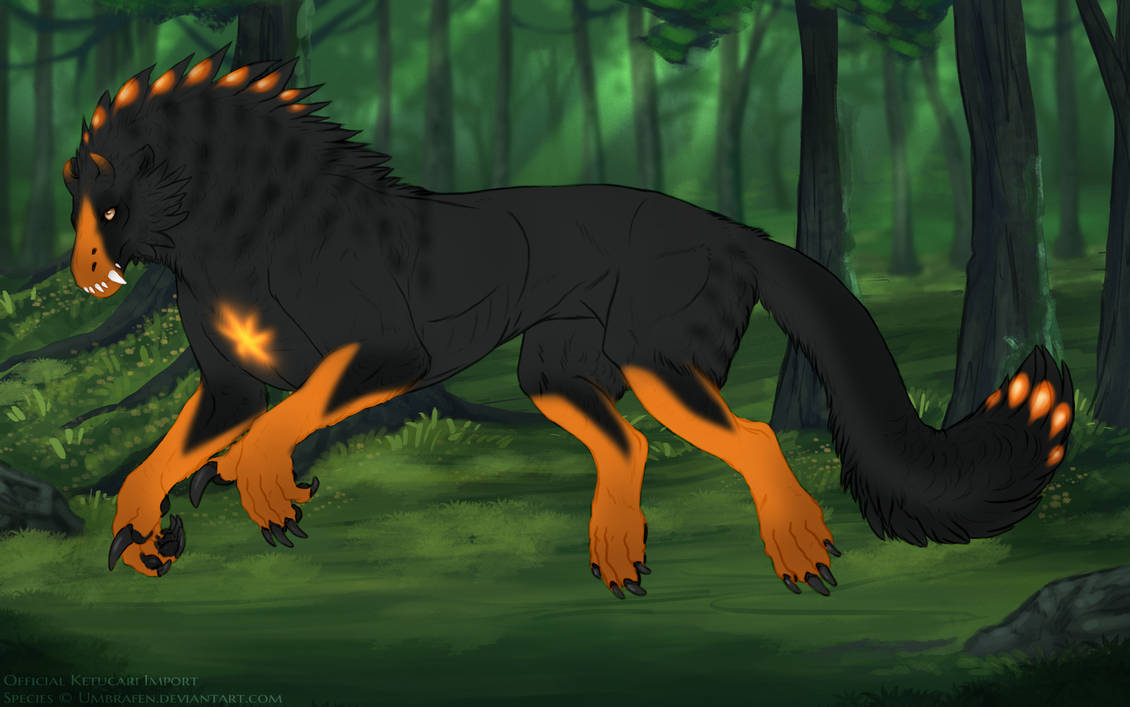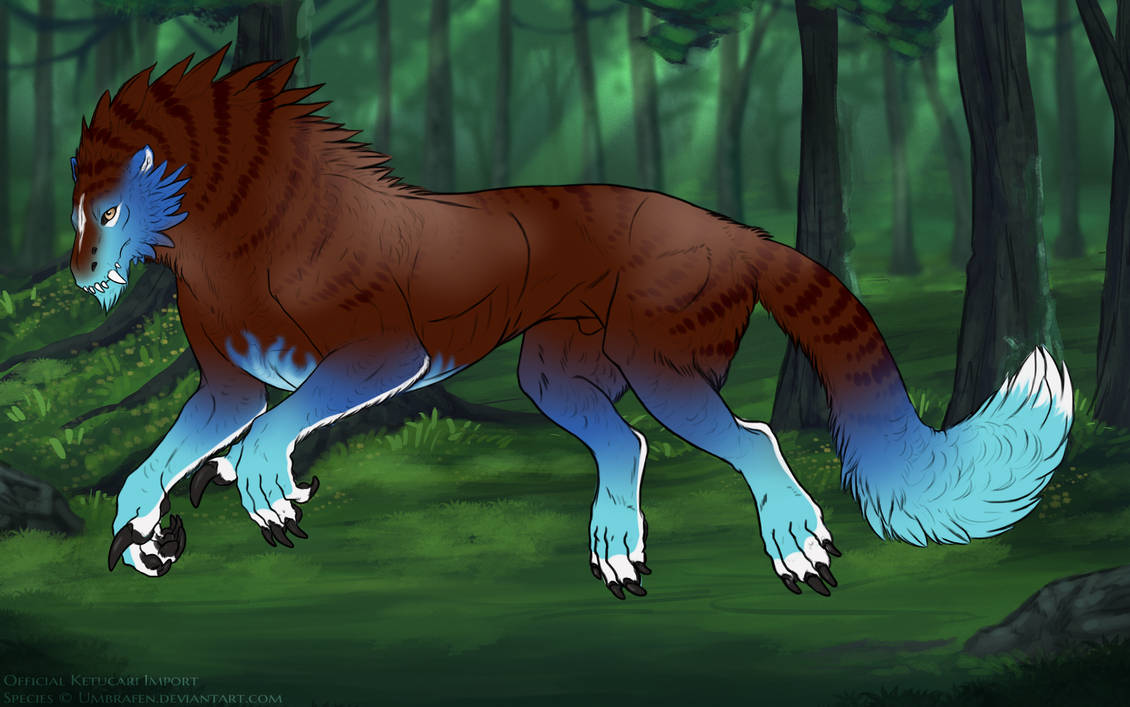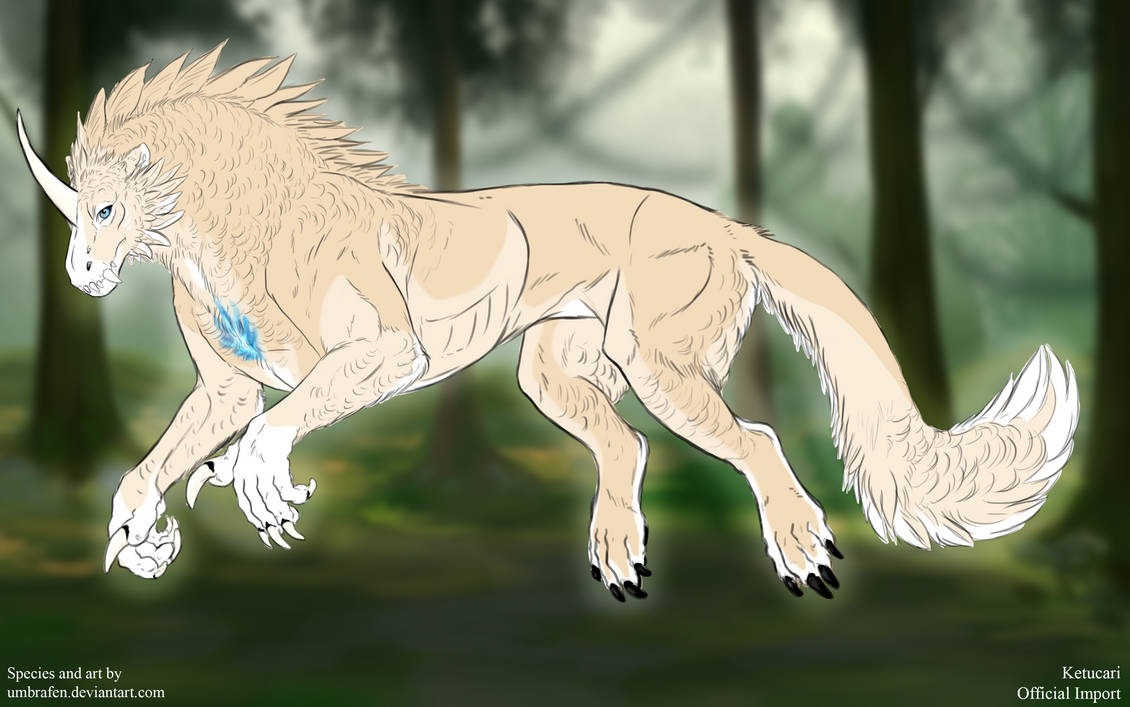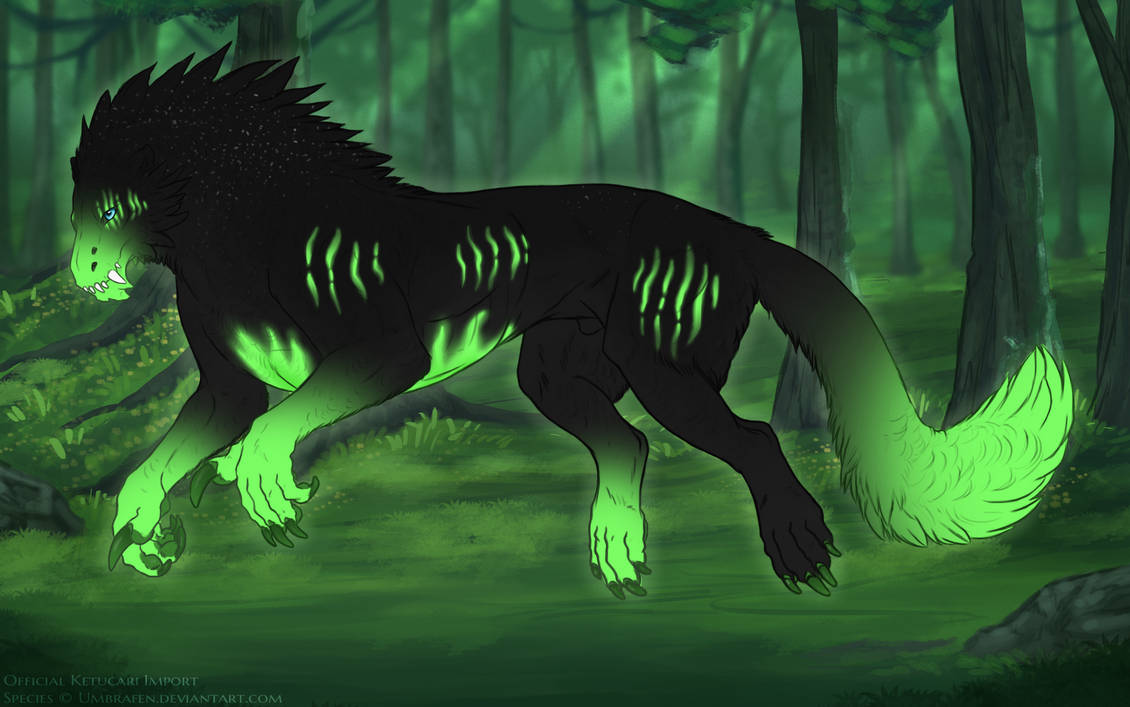Ember
Examples
Basics
the ketucari's underside. Ember can be hard-edged or soft-edged, but always has a definite flame-like shape.
Color and Shape
Ember can be any color of flame, even colors achieved by the reaction of certain chemicals. The only requirement is that, in ketucari who do not have the dilution, smokey, or flaxen genes, the color must be bright and saturated.
Acceptable colors are:
Orange, red, yellow, blue, green, pink, violet, and white.
You may use up to two of these colors in your ember. If using white, be sure that the marking does not look similar to minimal white. You can achieve this by making sure the marking
If using white, be sure that the marking does not look similar to minimal white. You can achieve this by making sure the marking
has the classic ember shape.![]()
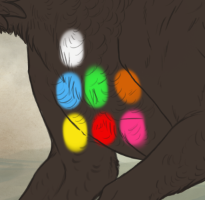
These are examples of acceptable ember colors, though you are not limited to this palette. These colors are vibrant and saturated, as ember should be.![]()
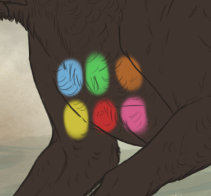
These colors are too desaturated for ember. The only time you have the option of making ember this desaturated is if you ketucari has the dilute, smokey, or flaxen genes.
Shape wise, ember has a solid core with "tendrils" emanating from it like as seen below. As long as this basic shape is clearly discernible, you may make the edges as soft as seen on Shiva 733.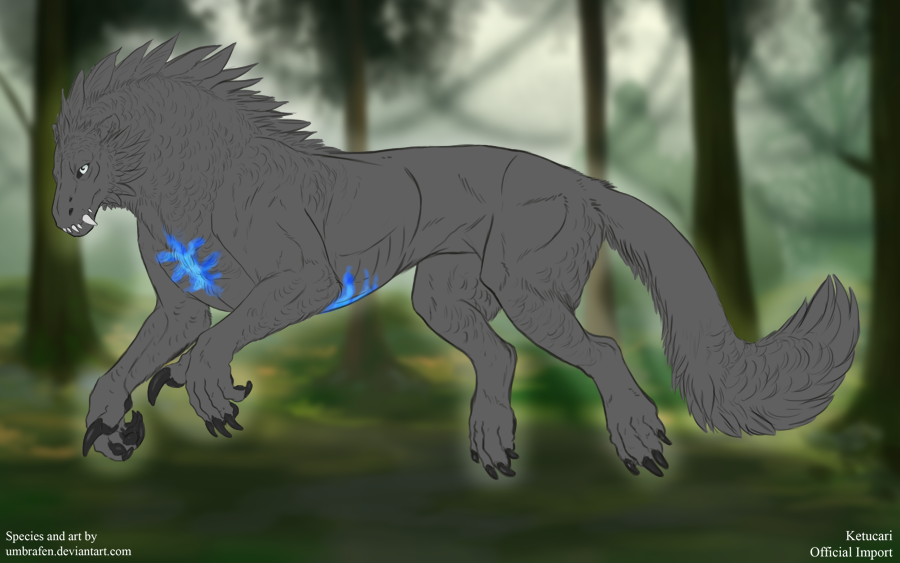
Range
The blue areas below show the maximum spread of ember, while green denotes the minimum.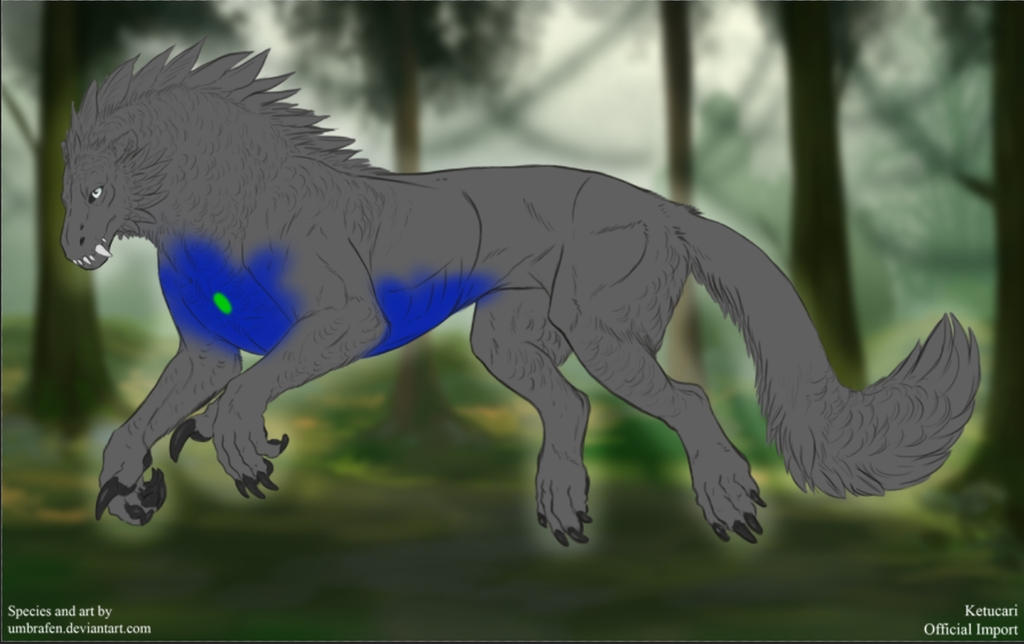
Interaction with Other Markings
![]() All markings can be layered under or over ember.
All markings can be layered under or over ember.![]() Ember can be influenced by Vapor.
Ember can be influenced by Vapor.![]() If your ketucari has the vent gene, you may connect ember and vent as seen on this ketucari (who also displays the vapor combination):
If your ketucari has the vent gene, you may connect ember and vent as seen on this ketucari (who also displays the vapor combination):
Accents
Here are some small accents you can add to your designs to make them more unique!
• Ember may have a subtle gradient, like below: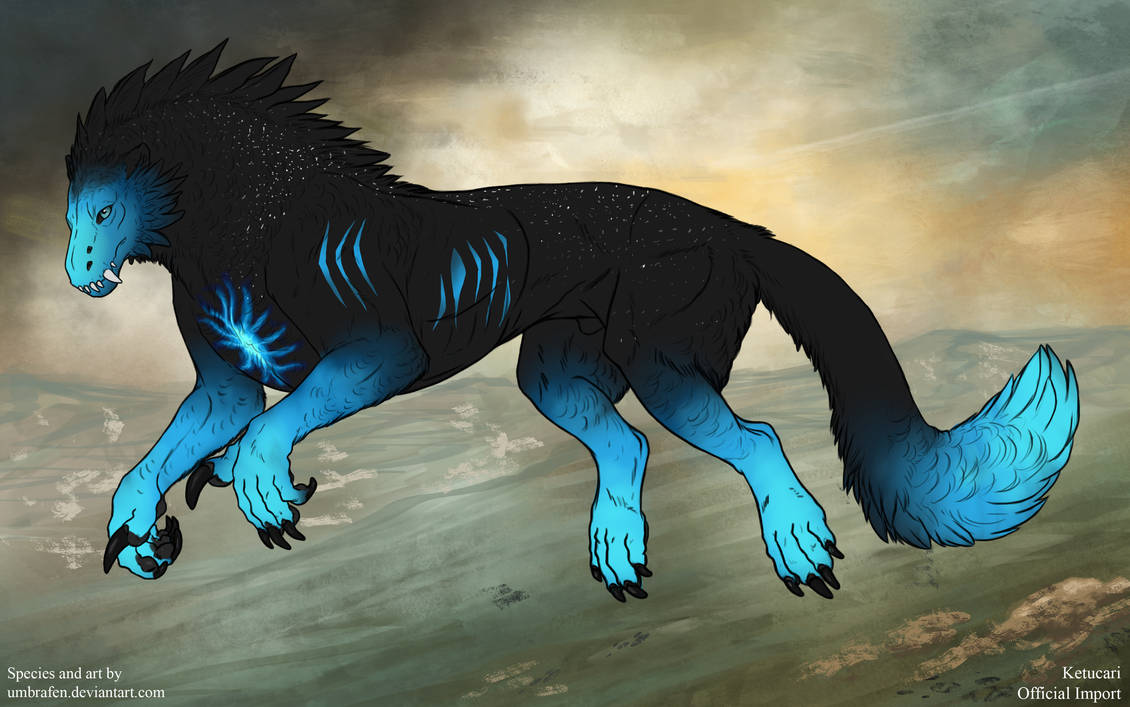
• Ember may have a slight glow, like below:
